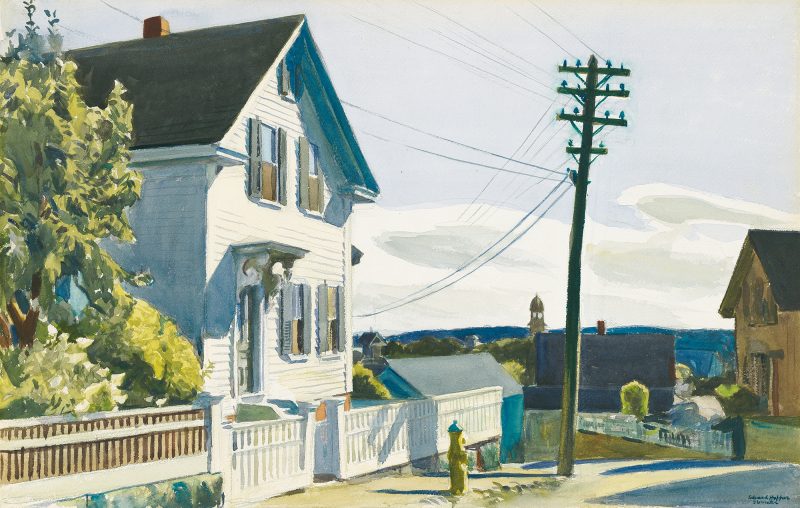
Adam’s House
Hopper, Edward
1928
Artwork Information
-
Title:
Adam’s House
-
Artist:
Hopper, Edward
-
Artist Bio:
American, 1882–1967
-
Date:
1928
-
Medium:
Watercolor and charcoal on paper
-
Dimensions:
16 x 25 inches
-
Credit Line:
Wichita Art Museum, Roland P. Murdock Collection
-
Object Number:
M122.54
-
Display:
Not Currently on Display
About the Artwork
Born in Nyack, New York in 1882, Edward Hopper moved to New York City in 1900 where he studied painting at the New York School of Art from 1900 to 1906 under William Merritt Chase, Kenneth Hayes Miller, and Robert Henri. Hopper rounded out his artistic education with three trips to Paris between 1906 and 1910. Unable to support himself as a painter early in his career, Hopper earned his livelihood as a commercial illustrator in New York City from 1906 to 1925, while working on his own time to realize his independent artistic ends. He worked mostly in oil until 1915, and from 1915 to 1923 devoted much of his effort to etching. In 1923 he took up watercolors, which became, with oil, his major medium.
To escape the sweltering heat of New York City, Hopper spent most of his summers after 1912 along the New England coast, working in Ogunquit and Monhegan Island in Maine, and in Gloucester, Massachusetts. After 1930 he and his wife summered regularly in South Truro, Massachusetts. In these New England locations, Hopper painted ships, lighthouses, and small-town streets in a spare, descriptive style. He executed his oils in the studio but painted his watercolors out-of-doors directly from the motif, typically completing them in a single session. He disliked being observed while he painted his watercolors, and after 1927, preferred to work from the back seat of his car so as to avoid being the spectacle that an artist with easel and brush inevitably presented to passers-by. In the Gloucester street scene Adam’s House, passers-by are in fact notably absent. The street appears vacant and anonymous, a generic New England corner. But the title suggests that it is a specific place and that Hopper was familiar with the house and its inhabitants; it was indeed an actual house, still standing decades later when it was photographed by the art historian Gail Levin.1
To render Adams House, Hopper, in his usual manner, first lightly sketched in the street scene in pencil onto toothed watercolor paper. Over this brief sketch he then applied loose washes before proceeding to develop areas of greater detail. Finer detail like shutter slats and telephone wires were dryly brushed in with deft strokes at the last. Forms appear in high relief beneath the summer sun with long shadows stretching from behind fire hydrant, utility pole, and neighboring houses. The utility pole and wires stand in marked contrast to the New England clapboard and picket fence, hinting at an underlying tension between traditional and modern values. The watercolor thus speaks subtly of Hopper s fascination with the alienating aspects of modernization and its transforming effect on the New England of the past.
1. For the photograph, see Gail Levin, Hopper’s Places (New York: Alfred A. Knopf, 1985), 66.